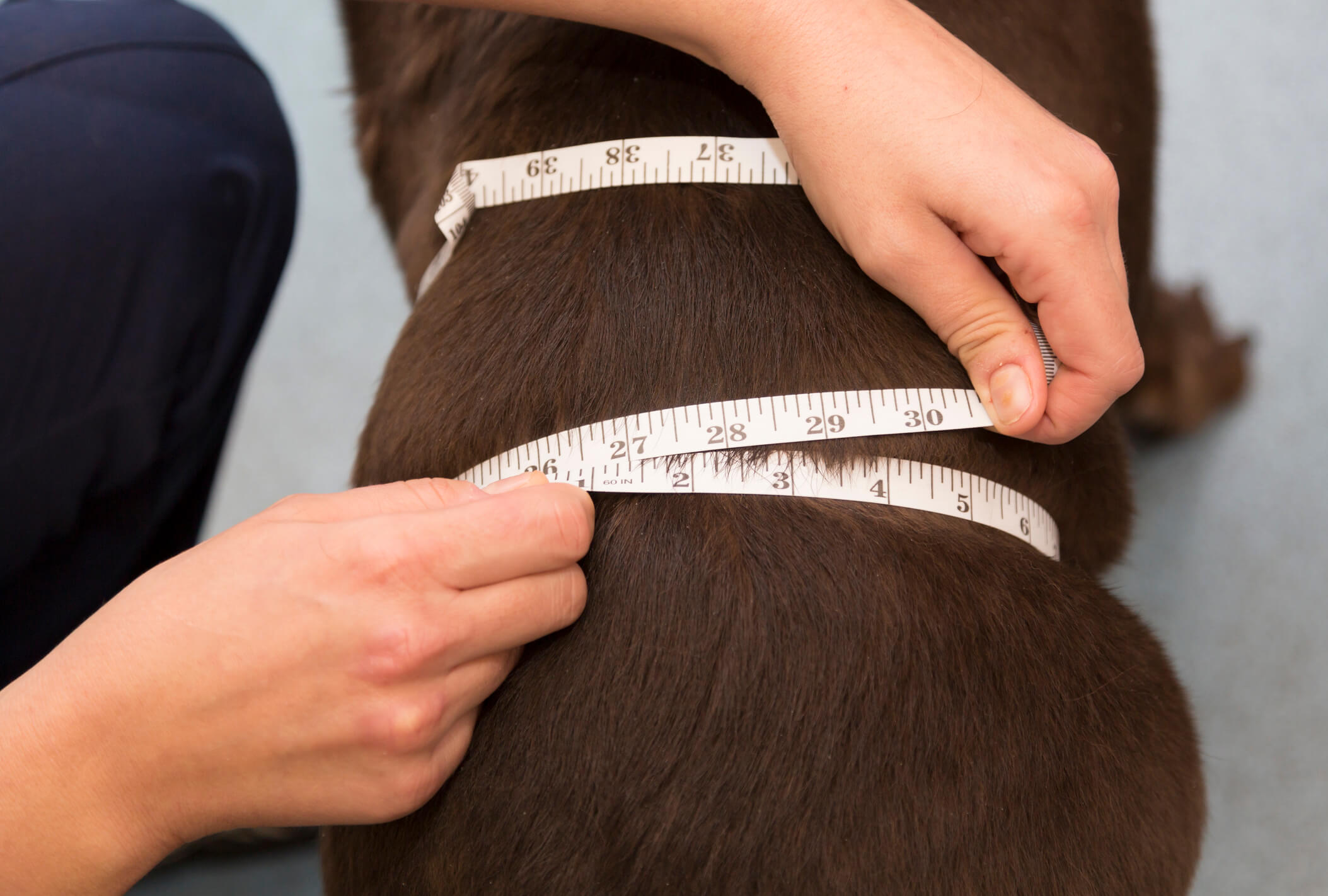
4 Steps to Helping a Chubby Dog Lose Weight
One day, you might look over at your pooch and realizing they’re looking a bit spherical around the midriff. Your dog isn’t alone in this—excessive weight gain is a problem that plagues more than half of domesticated canines. Lounging around the house combined with a few too many treats can easily pack on the pounds and lead to serious health consequences.
Take a moment to learn why dogs need to maintain a healthy weight and how you can easily prevent a life of chronic illness.
The health risks of extra weight
Excessive weight gain gives people an increased risk of health problems, and the same holds true for dogs. One of the most common risk factors associated with extra weight is diabetes. A diet packed with too many calories can force cells in the dog’s body to develop insulin resistance. Sugar builds up in the bloodstream because cells can’t process it, which is what makes dogs and humans diabetic.
Obese dogs also often suffer from osteoarthritis and chronic joint pain. All that extra fat puts stress on the joints and slowly wears down the cartilage. Cartilage is what helps joints function like a well-oiled machine, and once it’s gone, the dog will have a hard time walking and might experience pain with physical activity. Pain and stiffness will discourage the dog from exercising, which in turn helps them pack on more weight.
Depending on where the weight gain is located, a dog that’s overweight or obese might even experience difficulty breathing. Excessive fat around the chest and abdomen takes up space and limits lung capacity. The diaphragm won’t be able to expand that much, either. This leads to a decrease in oxygen supply, which makes it hard for your furry friend to keep up with a game of fetch. Decreased oxygen can lead to complications when combined with respiratory infections.
Obesity is more than a precursor to chronic health problems. The presence of extra fat is itself an issue. Fat cells produce hormones that trigger inflammation throughout the body. They also encourage free radicals to thrive along with the resulting oxidative stress. Inflammation and oxidative stress have been linked to life-threatening conditions such as cancer.

How to help your dog (safely) shed a few pounds
The health risks associated with excessive weight gain are serious. As a loving dog owner, naturally you’ll want to do everything you can to mitigate these risks. Helping your dog shed the extra pounds is easy when you apply these tips to their diet and exercise regimen:
- Consult a vet for guidance: Pet parents should ask a vet if their dog needs to go on a diet in the first place. The appropriate weight for a dog will depend on their breed, age, gender and health condition. The number of pounds on an obese dog might be the perfect amount for another. If the vet confirms your dog is overweight, they’ll come up with a plan to help the dog lose weight slowly over time. Weight loss should always occur under the supervision of a vet.
- Limit caloric intake: The weight loss journey for both dogs and humans mostly has to do with nutrition. Dogs with a highly active lifestyle won’t benefit from all that exercise if their portion sizes are too big. Pet parents often dole out portions based on the recommended serving size on food packages, but these measurements are vague and don’t take into account breed, age and the specific condition of your dog. Ask the vet for a recommended daily caloric intake and stick to it.
- Go easy on the treats: Treats are a great training tool for dogs. They’re also a favorite way among pet parents to shower their furry companions with love! However, a few extra calories here and there really start to add up. Processed treats loaded with fillers, meat and carbohydrates counteract the nutrients of a fresh, well-balanced diet. For training sessions, replace bagged treats with healthy human foods like blueberries, bananas, cucumber or a spoonful of plain pumpkin puree.
- Slowly increase physical activity: When it comes to losing weight, the formula is simple: fewer calories plus more exercise. The type and duration of physical activity depends on the dog. If you and your pup already go for a daily walk, gradually increase the duration by a few minutes. Dogs who are used to a sedentary lifestyle should start off with easy, low-impact forms of exercises and build their way up.
Obesity is a real threat, but pet parents who follow these simple tips can give their pooches a long, fulfilling life free from chronic disease. Remember, there’s a right and wrong way to lose weight. Doing so in a controlled manner will help the dog’s body adjust to the change. Dogs that achieve a healthy weight will reward their owners with more smiles and tail wags!


